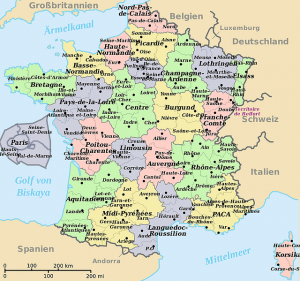NewsDesk @bactiman63
Several clusters of autochthonous Monkeypox (MKP) infections have recently been reported in several European countries, from the UK, Portugal, Spain and Sweden, particularly in men who have sex with men. (MSH). Cases have been reported in the United States and Canada.

Today, France’s Ministère des Solidarités et de la Santé reported the first confirmed monkeypox case in the country in an individual from Île-de-France.
According to officials, the patient is a a 29-year-old man with no history of travel to a country where the virus is circulating.
The patient is home isolated. No other details are available.
An in-depth epidemiological investigation is carried out by teams from Public Health France and ARS Île-de-France, in conjunction with the doctor who treated this person. The people who have been in close contact with this patient are currently being identified. They will receive information from the health authorities on what to do in order to limit the spread of the virus.
Monkeypox virus infection begins with a fever, often high and accompanied by headaches, body aches and fatigue. After about 2 days, a blistering rash appears in a single push, made up of fluid-filled blisters that progress to drying out, crusting and then scarring. Itching is common. The bubbles are more concentrated on the face, the palms of the hands and the soles of the feet. The mucous membranes are also affected, in the mouth and the genital area. The lymph nodes are swollen and painful, under the jaw and in the neck.
The incubation of the disease can range from 5 to 21 days. The fever phase lasts about 1 to 3 days. The disease, generally benign, most often heals spontaneously, after 2 to 3 weeks.
The Monkeypox virus can be transmitted by direct contact with lesions on the skin or mucous membranes of a sick person, as well as by droplets (saliva, sneezing, sputter, etc.). You can also become contaminated through contact with the patient’s environment (bedding, clothes, dishes, bath linen, etc.). It is therefore important that the patients observe isolation throughout the duration of the disease (until the disappearance of the last scabs, most often 3 weeks).
- England monkeypox cases now total 20, ‘We expect this increase to continue in the coming days’
- Canada: Two monkeypox cases confirmed in Quebec
- Spain: 7 confirmed monkeypox cases reported in the Community of Madrid
- Portugal monkeypox update: 23 confirmed cases
- Australia reports two monkeypox cases- One in Victoria and one in New South Wales
- Japanese encephalitis in Australia update
- Montreal: Suspected monkeypox outbreak, 17 possible cases reported
- Sweden reports monkeypox case in Stockholm

